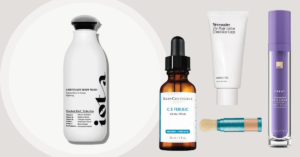Featured Post
The Femmena Edit
Sound Baths
8 Healing Benefits and Tips to Prepare, Plus At-Home Audio Included.
This post may contain affiliate links, which means I’ll receive a commission if you purchase through my link, at no extra cost to you. Please read full disclosure: here.
While most people have only recently heard of the music therapy experience known as sound bathing, thanks in part to young hipster celebs like Kendall Jenner who post their meditative practice of using singing bowls to promote spiritual well-being. The use of musical instruments has existed for thousands of years, from Tibetan singing bowls to the ancient Greeks using sound bathing vibrations.
The practice of sound healing is said to have originated in the Middle East and Himalayan Region around 500 B.C. It wasn’t until later that Westerners had their experiences with Tibetan singing bowls and now in the digital age you can experience a good night’s sleep by opening your mobile device and streaming a singing bowl sound meditation to get into a relaxed state of deep rest.
This karmic cleansing meditative practice varies according to situation and lifestyle, but it can be as simple as throwing on your favorite eye mask, laying on a yoga mat, and drifting off into a deeper state of consciousness as you listen to a soothing sound bath or something more elaborate like going to a wellness center to experience a sound bath with a sound healing practitioner who can guide you into deeper states of relaxation.
With the help of sound therapists, we’ve summarized everything that easily defines what are sound baths, the benefits of a sound bath, how sound baths can help you gain perspective on mental health clarity, and the positive human health effects of a sound bath meditation.
What Happens During a Sound Bath?
Sound baths are a deeply immersive, full-body listening experience that uses sound therapy to restore your mind, body, and soul in a meditative; holistic way. More simply put, a sound bath is a full body listening experience where you are bathed in an overtone emitting instruments that produce healing sound waves.
Sound baths are produced in a variety of ways each using different waves of frequencies that emit a particular sound from Tibetan singing bowls, crystal singing bowls, tuning forks, chimes, and gongs, or could even include a guided meditation.

Benefits of Sound Baths
During the late 19th century researchers proved the correlation between sound and healing, noting that most sound instruments are tuned to frequencies that stimulate certain brain waves (alpha and theta), that cause physical sensations that could lower blood pressure as well as assist with the relaxation of the body’s digestion system.
The NIH released peer-reviewed studies in 2016 that reported some additional sound bath benefits, including physical pain reduction due to the restoration of the body’s cellular vibrational levels.
More research highlights that practicing sound bath therapy rewires unbalanced hormones and fight or flight reactions to external stimuli causing the resynchronization of cellular vibrational levels to a normal beta state baseline frequency.
Are There Different Sounds in a Sound Bath?
Yes, depending on the type of instruments that are being used for specific sound baths that are based on the echoing sounds of resonance, which are the specific sounds and their vibrations (sound waves) that can be used to enhance one’s well-being.
What Are The Mental Health Benefits?
Your mind and body function at certain vibrations, and when we experience something like anxiety or depression our body’s nervous system and its cellular vibrational levels become weak or damaged.
A 2022 systematic review conducted by MDPI, a Swiss-based medical journal cited health benefits associated with “the intervention of singing bowl music found its way into various fields of application such as prevention, therapy, wellness, and education. In this study, neurophysiological effects as well as subjective changes in well-being were evaluated. The results showed an overall decrease of EEG power during the singing bowl music, as well as visible body relaxation.” (Nike Walter and Thilo Hinterberger).
The review concluded that when people relax and are in a meditative state that the healing benefits of sound baths have been proven to alleviate the following symptoms:
- PTSD (post-traumatic stress disorder)
- Depression & Anxiety
- Lower blood pressure
- Sleep Disorders
- Clarity
- Reduced anxiety & stress
- Balance & Higher levels of consciousness
- Helps release emotional trauma
What Are The Side Effects of Sound Baths?
Overall the side effects are overwhelmingly positive but still, it’s worth mentioning that every person could have a different reaction. A controlled study by Clevland Clinic documented that some of the after-effects of listening to a sound bath ranged depending on the patients’ experience some felt tired and needed a prolonged period of relaxation while others showed an increase in energy levels almost immediately after.
Oftentimes, each sound bath will resonate with different emotions and trigger different emotional responses. For example, in one session you may have a deep and profound trauma release while in another session your mind and body experience pure relaxation as you listen to the musical melodies of a sound bath.
Deeper States of Consciousness
Learning how to stay connected to the present moment is a byproduct of other therapies such as meditation, however, the sound bath experience calmly guides listeners with the help of various instruments, tones, and sensations through a more profound meditative experience that allows individuals to achieve deeper states of consciousness by connecting the subconscious and conscious minds.
This allows one to feel the physical pain or tension that is still trapped in their bodies sometimes for decades and the key to releasing this pain and tension is acknowledgment. Once you allow yourself to connect to and relive that painful experience in a calm and neutral environment then you will begin to experience the physical healing process.
How Long Do the Effects Last?
Some sleep experts have suggested that sound bath effects last on average from an hour to a few hours. Depending on how deep the meditation session explored the subconscious mind.
Most benefits that are long-lasting are felt with the release of pain and traumas that were stored in the subconscious mind.
How Long Will It Take?
This again depends on the person and their lifestyle. Some like to attend sound baths in person because the group setting allows them to feel supported and gives them a sense of community where they can connect with like-minded people who enjoy the same music therapy. While others may like to listen alone from the comfort of their yoga mats at home deeply immersed in the echoing sound healing journey.
Pro-Tips for the Best Sound Bath At Home
The experience begins with the person laying down or sitting in a comfortable position with their eyes closed in a relaxed environment and taking a few deep breaths.
Start with a brief meditation that allows you to ground yourself and set intentions.
Thereafter, use the gentle segue of the ancient acoustical instruments: gongs, flutes, chimes, and Himalayan and crystal singing bowls to take you into a deep state of rest and repair.
The recorded sound bath below is meant to facilitate the recalibration of your body’s vibration on a cellular level, but we also recommend you head over to the Healing Vibrations YouTube channel to experience an unlimited amount of sound bath sessions and Tibetan music.
Travis Schumacher, is a sound therapist and the co-founder of Healing Vibrations, LLC. Schumacher began his journey of the Healing Arts in 2011 when his meditation brought an unexpected out-of-body experience that altered his life path forever. Led by a newfound desire to heal others, he soon became a certified Reiki Master which then led him to Cortiva, the institute of Message Therapy where he became a Licensed Massage Therapist.
The content provided in this article is for information purposes only and is not a substitute for professional advice or medical treatment. It is provided with the understanding that FEMMENA, LLC is not engaged in the provision or rendering of medical advice, services, or diagnosis. The opinions and content included in the article are the views of the creator or author only, and FEMMENA does not endorse or recommend any such content, information, or any product or service mentioned in the article. You understand and agree that FEMMENA shall not be liable for any claim, loss, or damage arising out of the use of, or reliance upon any content or information in the article










